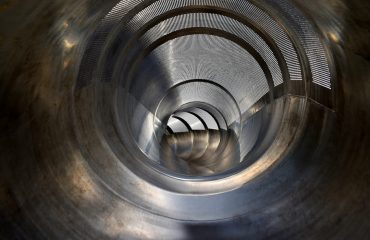body { font-family: sans-serif; line-height: 1.6; }
h1, h2, h3 { color: #333; }
h1 { font-size: 2.5em; }
h2 { font-size: 2em; }
h3 { font-size: 1.5em; }
code { background-color: #f0f0f0; padding: 2px 4px; border-radius: 4px; }
High-strength steel (HEA) profiles are revolutionizing the design and construction of heavy load structures. Their exceptional strength-to-weight ratio allows for lighter, more efficient designs, reducing material costs and improving overall structural performance. This post delves into the crucial aspects of utilizing HEA profiles in such demanding applications.
Understanding the Properties of HEA Steel
HEA steel, characterized by its yield strength exceeding 450 MPa, offers significant advantages over conventional structural steel. This increased strength stems from advanced alloying and controlled rolling processes. Key properties to consider include:
- High Yield Strength: This is the most significant advantage, allowing for smaller sections and reduced weight compared to traditional steels.
- Improved Weldability: Modern HEA steels are designed for excellent weldability, crucial for complex structural components.
- Enhanced Fatigue Resistance: HEA profiles often exhibit superior fatigue resistance, vital for structures subjected to repeated cyclic loading.
- Ductility: While possessing high strength, sufficient ductility is maintained to ensure reliable performance under load.
- Toughness: The toughness of HEA steel ensures resistance to impact and brittle fracture, crucial in demanding environments.
Understanding these properties is paramount in selecting the appropriate HEA profile for a specific application and ensuring the structural integrity of the design.
Design Considerations for HEA Profile Structures
Designing with HEA profiles requires a nuanced approach differing from traditional steel design. Key considerations include:
- Nonlinear Behavior: HEA steel’s high strength can lead to nonlinear material behavior, requiring advanced analysis techniques beyond simple linear elastic analysis. Finite element analysis (FEA) is often employed.
- Buckling Considerations: While lighter, the slenderness of HEA sections necessitates careful consideration of buckling under compressive loads. Appropriate bracing and stiffening may be required.
- Weld Detailing: Proper weld design and execution are crucial due to the higher strength of the material. Weld defects can significantly reduce the overall strength and fatigue life.
- Connection Design: Efficient and strong connections are vital. High-strength bolts and optimized weld configurations are often necessary.
- Local Buckling: The higher strength can lead to increased susceptibility to local buckling in certain sections. Careful section selection and optimization are crucial.
Specialized software and experienced engineers are crucial for successful HEA profile structural design.
Applications of HEA Profiles in Heavy Load Structures
The unique properties of HEA profiles make them ideal for a wide range of heavy load applications:
- Bridges: HEA steel allows for longer spans and lighter bridge decks, reducing construction costs and improving aesthetics.
- High-Rise Buildings: In skyscrapers, HEA profiles contribute to taller structures with less material, reducing the overall weight and foundation requirements.
- Offshore Structures: The high strength and corrosion resistance of certain HEA grades make them suitable for harsh marine environments.
- Heavy Equipment: In cranes, excavators, and other heavy machinery, HEA profiles enhance strength and reduce weight, improving efficiency.
- Wind Turbine Towers: The strength-to-weight ratio is crucial in wind turbine towers, enabling taller towers to capture more wind energy.
The versatility of HEA profiles is constantly expanding as engineers explore new and innovative applications.
Advantages of Utilizing HEA Profiles
The benefits of incorporating HEA profiles in heavy load structures are substantial:
- Reduced Material Costs: Lighter structures translate to less material usage, reducing overall project costs.
- Improved Structural Efficiency: Higher strength allows for more efficient designs with optimized section sizes.
- Enhanced Durability: The superior strength and fatigue resistance contribute to a longer lifespan for the structure.
- Sustainability: Reduced material usage contributes to environmental sustainability by minimizing resource consumption.
- Aesthetic Appeal: Lighter structures often allow for more slender and aesthetically pleasing designs.
These advantages collectively contribute to more cost-effective, sustainable, and efficient heavy load structures.
Future Trends in HEA Profile Applications
The future of HEA profiles in heavy load structures is bright, with ongoing research and development focusing on:
- Advanced Material Development: Further improvements in strength, weldability, and corrosion resistance are constantly being pursued.
- Optimized Design Methods: Advanced computational techniques are being developed to optimize HEA profile designs for specific applications.
- Increased Use in Sustainable Construction: HEA profiles are playing an increasingly important role in environmentally friendly construction practices.
- Integration with Other Materials: Hybrid structures combining HEA steel with other materials like concrete or composites are being explored.
- Improved Fabrication Techniques: Developments in manufacturing processes are aiming to improve the efficiency and cost-effectiveness of HEA profile fabrication.
These advancements promise even more efficient, sustainable, and robust heavy load structures in the years to come.
Conclusion: HEA profiles are transforming the landscape of heavy load structures. Their unique properties, when coupled with advanced design techniques, offer significant advantages in terms of cost, efficiency, and sustainability. As research and development continue, the applications of HEA profiles will only expand, shaping the future of structural engineering.
Tags: HEA Steel, High Strength Steel, Heavy Load Structures, Structural Engineering, Steel Design




